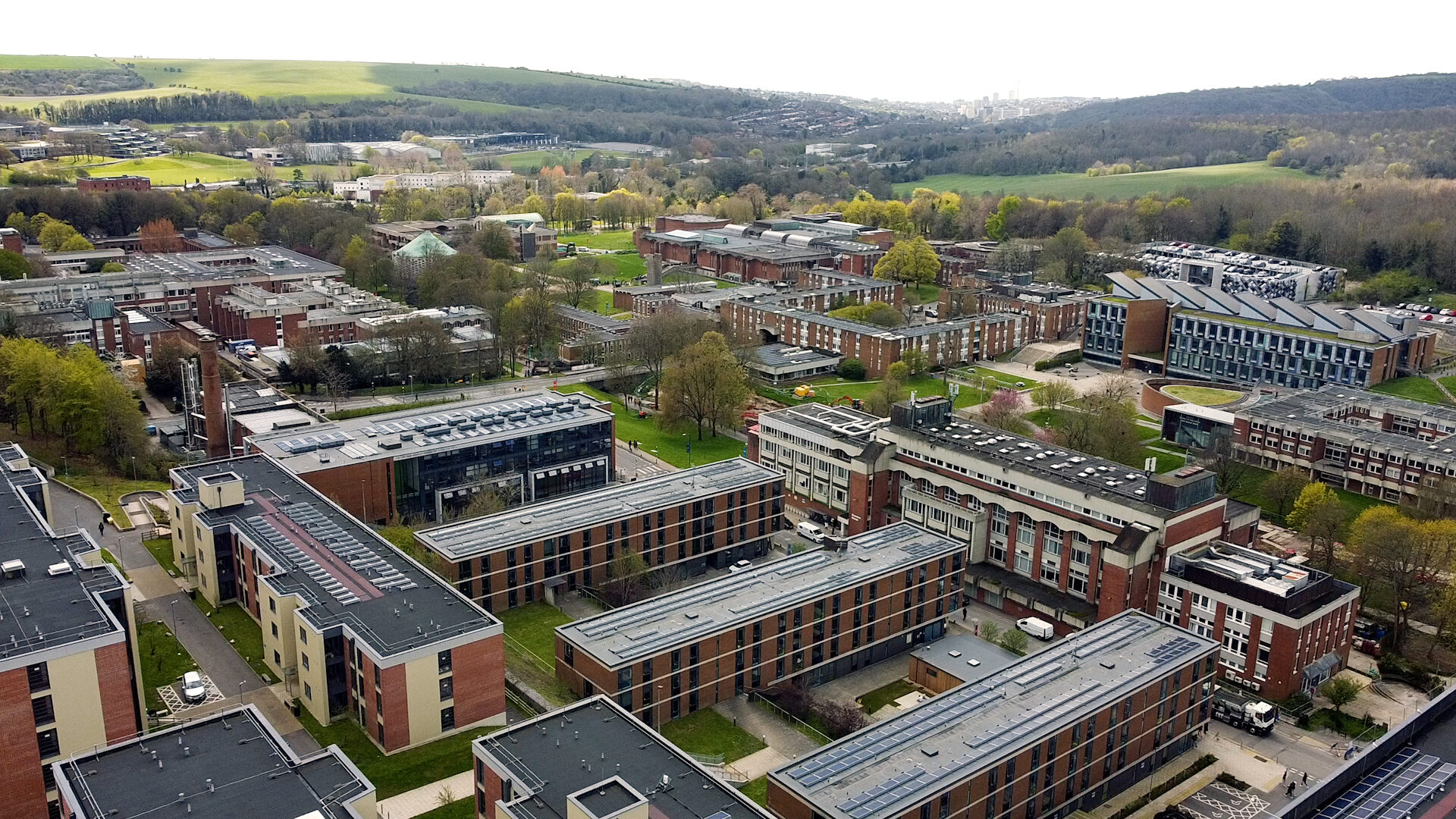Rooftop solar case study: Sussex University

Find out how the University of Sussex harnessed rooftop solar to power their campus, and cut bills too.
Roofs ‘an ideal starting point’
Sustainablity is at the heart of the University of Sussex; they’re ranked first in the world for sustainable development in the QS rankings for universities’ performance. In 2017, the university decided to reduce its carbon footprint by installing rooftop solar panels. The university’s flat roofs were an ideal starting point. With rooftop solar being a practical and cost-effective option, it was an easy first step on its decarbonisation journey. They installed 3,144 solar panels which produced over four GWh of renewable energy for the campus. It was the biggest project of its kind in an academic institution at the time.
While the solar panels may not fully meet the energy demands of the university, they have helped to reduce its reliance on non-renewable energy. There has also been a corresponding reduction in energy bills.
The university community welcomed the initiative, with sustainability manager Samantha Waugh describing the project as a ‘popular move’ after the university declared a climate emergency in 2019. Samantha tells us: ‘There was an awful lot of passion from the students for a green revolution and decarbonisation. I’ve never worked somewhere with so much passion around sustainability because there’s so many academics and students studying and teaching this area.’
Clear potential
Despite the success of the project, Samantha says there is still room for improvement. ‘We’re looking at continuing to expand solar on roofs and walls,’ she tells us. ‘There’s so much untapped potential in terms of solar but also increasing biodiversity with solar and green roofs.’ The project was also not without its challenges. Being on a heritage site with historical architecture, there were regulations around listed buildings. To comply, only unlisted buildings could be selected for solar installation, which limited the project’s scope. ‘We have to be very sensitive when we’re doing the work. We’re trying to do things that don’t change the overall feel and unique design of the space.’
Nevertheless, Samantha believes there are opportunities to build on the rooftop solar project, but that more needs to be done to support the transition to clean energy. This includes enhanced government funding and incentives for businesses and homeowners to install rooftop solar. In addition, greater investment in electrical infrastructure would increase the grid’s capacity for renewable energy.
‘We are like a small town and there’s only so much electricity supply we can access. We would like to see the government increase the capacity of the national electricity grid to help us further expand our renewable energy production and consumption as we move away from fossil fuels. Evidence suggests it is the financial levers that drive the change, so making it cheaper and easy to expand solar production is a win-win for everyone and our planet.’
Watch the video
Find out more about the University of Sussex rooftop solar project by watching the video below. View the transcript here.



